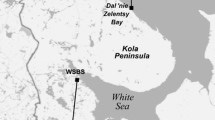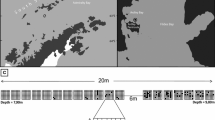Abstract
Effects of dispersal and mating systems on the genetic structure of populations were evaluated by comparing five sea anemones: four Epiactis species that brood their offspring to the juvenile stage and one Anthopleura species that broadcasts gametes and has pelagic, planktotrophic larvae. The anemones were sampled at sites ranging from British Columbia to southern California between 1988 and 1992 and were analyzed by enzyme electrophoresis and by multilocus DNA-fingerprinting. Results were only partially consistent with expectations. While all four brooding species had lower observed heterozygosities than the broadcasting species, not all brooding species had greater population subdivision than the broadcasting species. The self-fertile E. prolifera had the expected evidence of intense local inbreeding ( f = 0.955); unexpectedly, the cross-fertile E. lisbethae and E. ritteri also had similar departures from random mating ( f = 0.957 and 0.831, respectively) probably due to biparental inbreeding among near neighbors in small, highly subdivided populations.
Similar content being viewed by others
Author information
Authors and Affiliations
Additional information
Received: 24 May 1996 / Accepted: 12 July 1996
Rights and permissions
About this article
Cite this article
Edmands, S., Potts, D. Population genetic structure in brooding sea anemones (Epiactis spp.) with contrasting reproductive modes. Marine Biology 127, 485–498 (1997). https://doi.org/10.1007/s002270050037
Issue Date:
DOI: https://doi.org/10.1007/s002270050037




